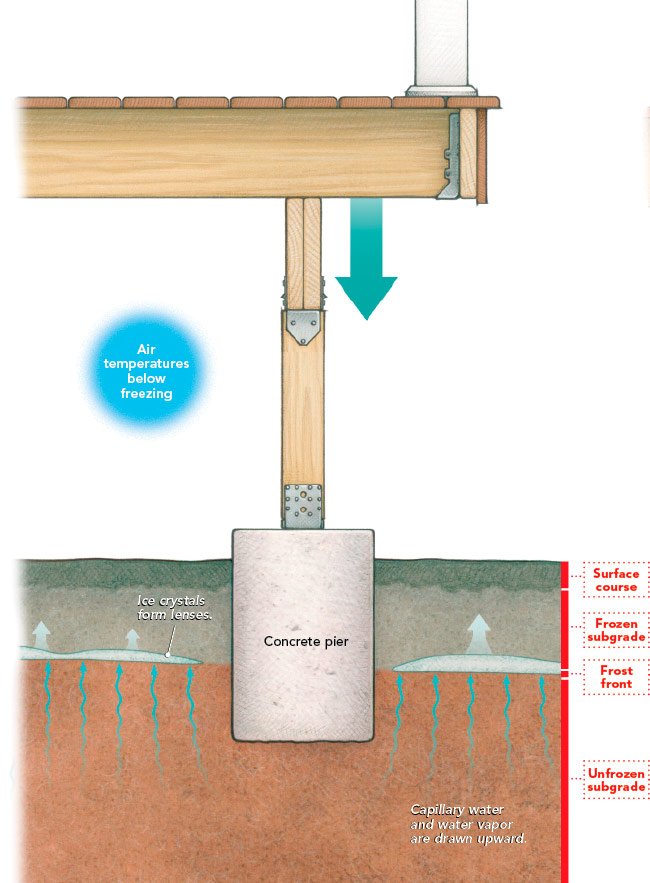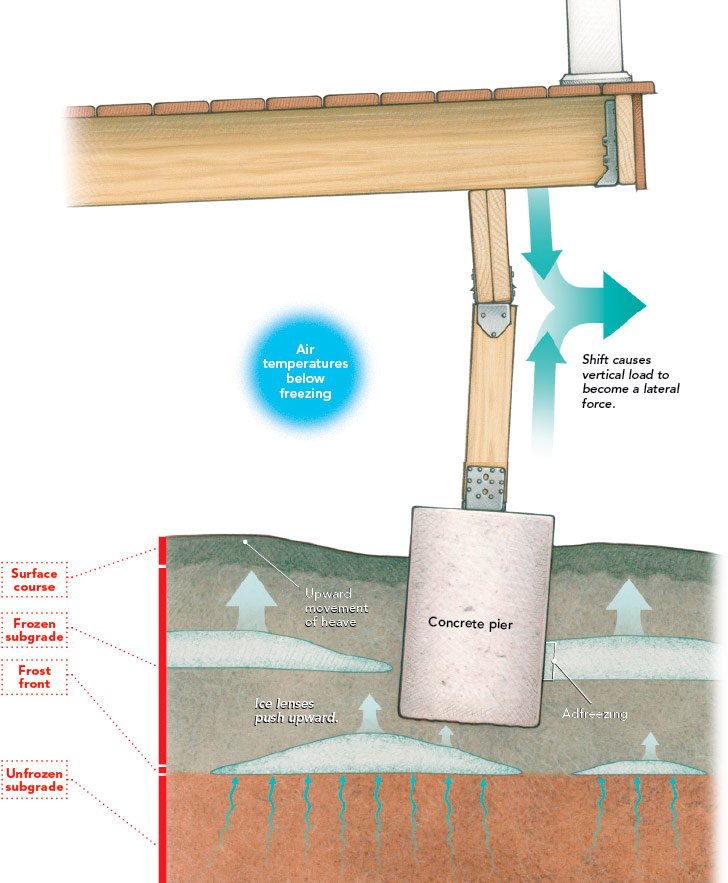Structural Perspective 2
A Structural Perspective
Snow Loads
In the Northern Hemisphere, January and February are typically the coldest months in the year. The American Society of Civil Engineers and/or local jurisdictions usually governs the amount of ground snow loads that Engineers need to consider in their design. On average, snow accumulation on the roof of a typical single family home can be 30% less than the ground snow accumulation.
FACTORS GOVERNING SNOW LOADS:
Exposure
Buildings in open areas tend to accumulate more snow on the roof. Nearby trees, buildings, or structures can limit the total amount of snow that can accumulate on a specific building under consideration.
Thermal
Typical building structures are heated. As such, the roofs are considered warm. As a result, some of the snow that falls on the roof will melt, reducing the total accumulation.
Slope
Roofs with steep slopes can assist with snow load reduction, as the snow is likely to slide off the roof.
Building Importance
Buildings such as Hospitals, Fire Stations and Police Stations are considered essential structures, and are generally designed for higher loads than residential buildings.
OTHER IMPORTANT FACTORS TO CONSIDER
Snow Drifts: Winds can blow snow from one side of the roof to the other. This can create an unbalanced condition or higher accumulation levels on one specific side of the roof structure. Additionally, in an urban environment, snow can blow or fall from upper roofs down to lower roofs, creating higher localized unbalanced snow accumulation.
Snow drift from one side of the roof to the other
Snow accumulation on lower roofs may be higher in urban areas.
Photo Cred: Squarespace Stock Images
Structural Perspective 1
A Structural Perspective
Frost Depth
Winter is upon us. The majority of the county is currently experiencing or has experienced dangerous freezing conditions. Frozen ground can have a devastating impact on your structure’s foundation if you are above the frost line. Frost Depth varies by geographic location, and frost heave is caused when ice forms in the soil during the freezing process. This ice can cause your foundation to temporary rise, or permanently settle as the ground freezes from the top and penetrates downward.
Ingredients for frost heave:
Cold Weather: Below freezing temperatures
Presence of Water: Moist soil or high water table
Fine Soil: Silty and Clayey soils that allow permeability
Foundation below Frost Depth prevents Frost heave Frost Heave can cause the Foundation to rise, then settle when the ice melts
Photo Cred: Fine Homebuilding, Drawings: Christopher Mills.
Fun fact: The soil/underwater sediment that remains frozen in Alaska is called permafrost, and special provisions is taken when designing a structure’s foundation to avoid heat from the structure melting the permafrost.










